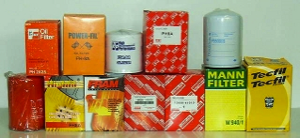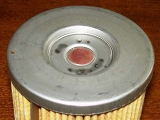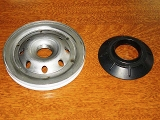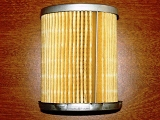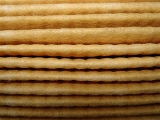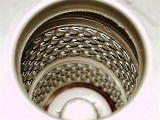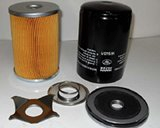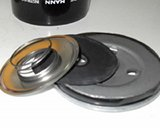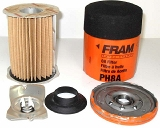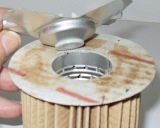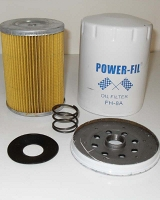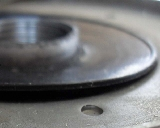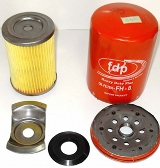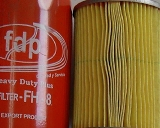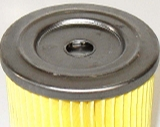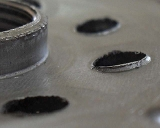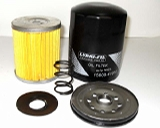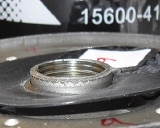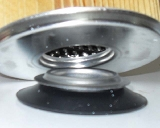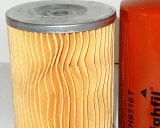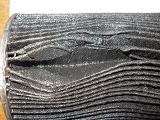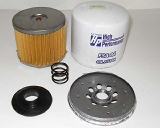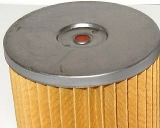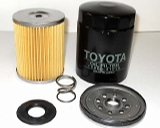The difference between "Equivalent" filters
This is an update of the study we did a few years ago. We set out one afternoon and bought a dozen filters that were supposed to be equivalent to the Toyota 15600-41010 commonly called the PH8-A that is used on so many vehicles here, just as we had done previously.
This is not intended to be a scientific study. We took some physical measurements and made some observations. We do not have the equipment nor the need to check the efficiency or capacity of these filters.
Of the 12 filters we bought, one had to be discarded because it did not even meet the basic qualifications for that filter type. It did not even have a pressure relief valve. That error was probably an error in the store where we bought them. The remaining 11 are shown. They ranged in price between $4.30 and $7.15 US Dollars, including sales and value added taxes ($3.60 to $6.00 without taxes). The biggest surprise was that the most expensive, made by Denso and labeled Toyota was far from the best of the lot. The winner by far was Donaldson, that was $4.79 before taxes (mid-way in the price range). The Mann was $5.40 before taxes and I would classify it in the upper part of the quality range except that its pressure relief valve was 4 times as hard to push as the rest of the bunch. In the vehicles that used this filter the valve should begin to open at a differential of about 8 psi and be totally open at 11 psi to avoid the engine running dry when viscosity is high, temperatures are low, or the filter is clogged.
Some of these filters are so bad that I believe their use would cause serious damage to the engine within 20,000 miles of use.
As in 2002, we are including the country of origin, although many are produced in different countries for different markets. Click here to see the original 2002 study.
Click here to see how some of these filters fall apart or collapse in use.
Some came in boxes, some wrapped, some with a tight wrapping over the opening to protect them. Some of the ones that just had boxes were very dirty inside and out.
You can see that for "equivalent" filters, these are not very similar.
In terms of structure, strength size of valves and surface area, this is by far the winner.
The relief valve is twice the size of the Mann and Toyota, madd from a fiber that should seal well and not get stuck like the metal ones.
The "paper" filter element is thick and has ridges on the sides of the pleats to give it more strength and avoid collapse. The center tube is perforated towards the inside to avoid damage to the element.
It has 2100 cm2 of filter area.
Like others I have cut open, this filter is almost 100% cardboard or paper. The seals are better than the Fram made in Brazil, but the metal valve support still rested on the perforated tube instead of sealing against the end cap.
The relief valve pressure was twice the majority of the filters, but half of what was required in the Mann.
It has 1190 cm2 of filter area.
This looks like a mid-range filter quality except that there was absolutely no pressure on the anti-drain valve to hold it closed. It would drain all the oil back to the oil pan if not installed vertically from below.
It has 1883 cm2 of filter area.
This filter is tied with WST for the worst in the lot. The metal relief valve was stuck in the semi-open position. With a little force, I could move it and it would stick somewhere else. The barbs on the base holes eliminated any possible sealing of the anti-drain valve. The paper is very thin and so much on such a small base that it folded over and closed the space the oil should pass.
It has 1206 cm2 of filter area.
The retention valve is very thin and flimsy, depending on the weight of the oil to push it closed and avoid dry starts. The cartridge is small in relation to the can, with the space filled by a large spring.
The glue had dripped down the paper from the end caps.
It has 1243 cm2 of filter area.
In general this looks like a decent filter in the upper mid range of the others, but the price is the same as the Donaldson.
The retention valve is interesting, with a large metal ring to push against the rubber valve, but the metal ring seats against the metal end cap, reducing the seal.
It has 2248 cm2 of filter area.
This is the smallest filter of the group. The relief valve is also the smallest, possibly limiting the flow of oil when the small amount of paper is filled and clogged or the oil is too thick for the temperature.
It has only 731 cm2 of filter area.
